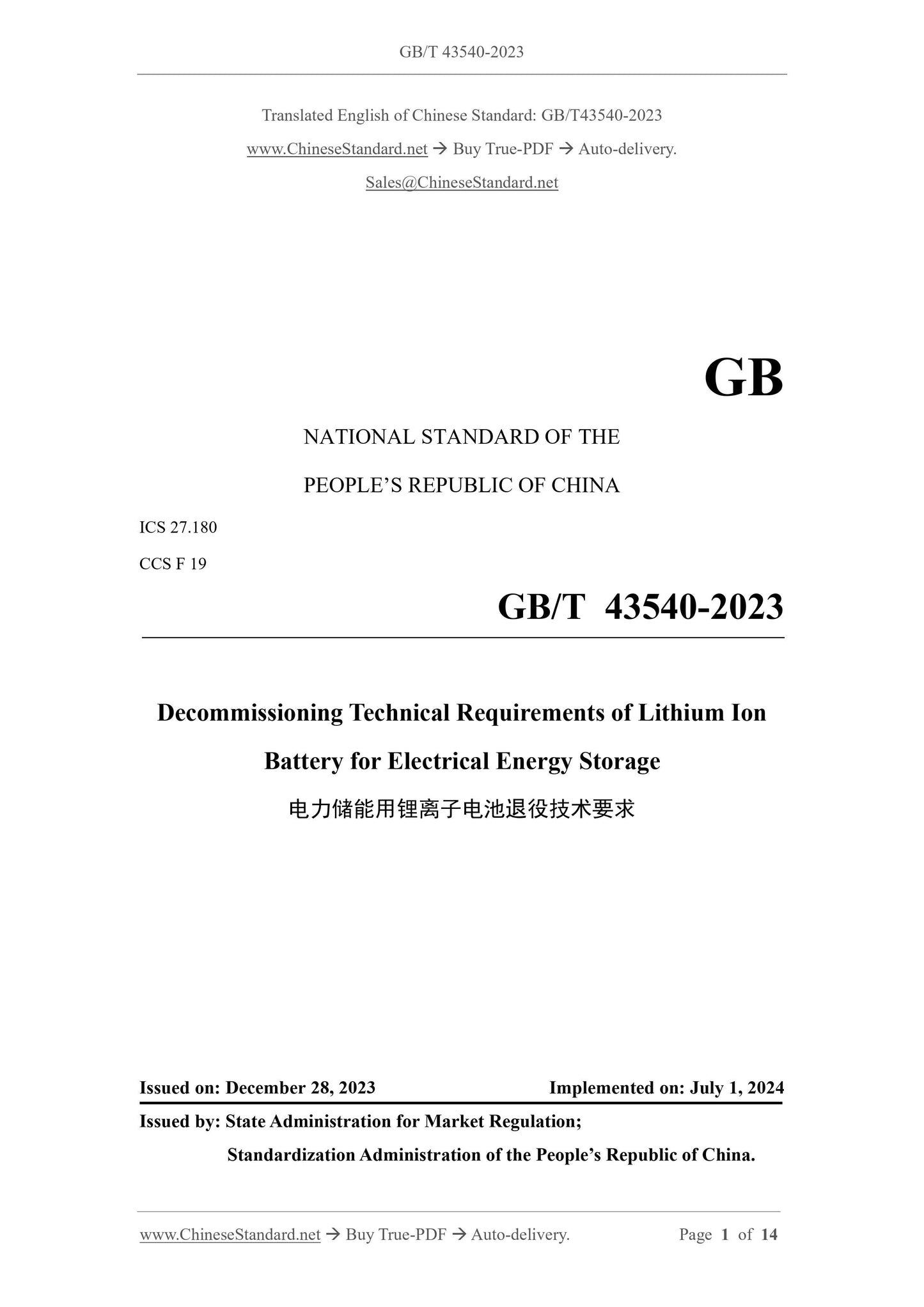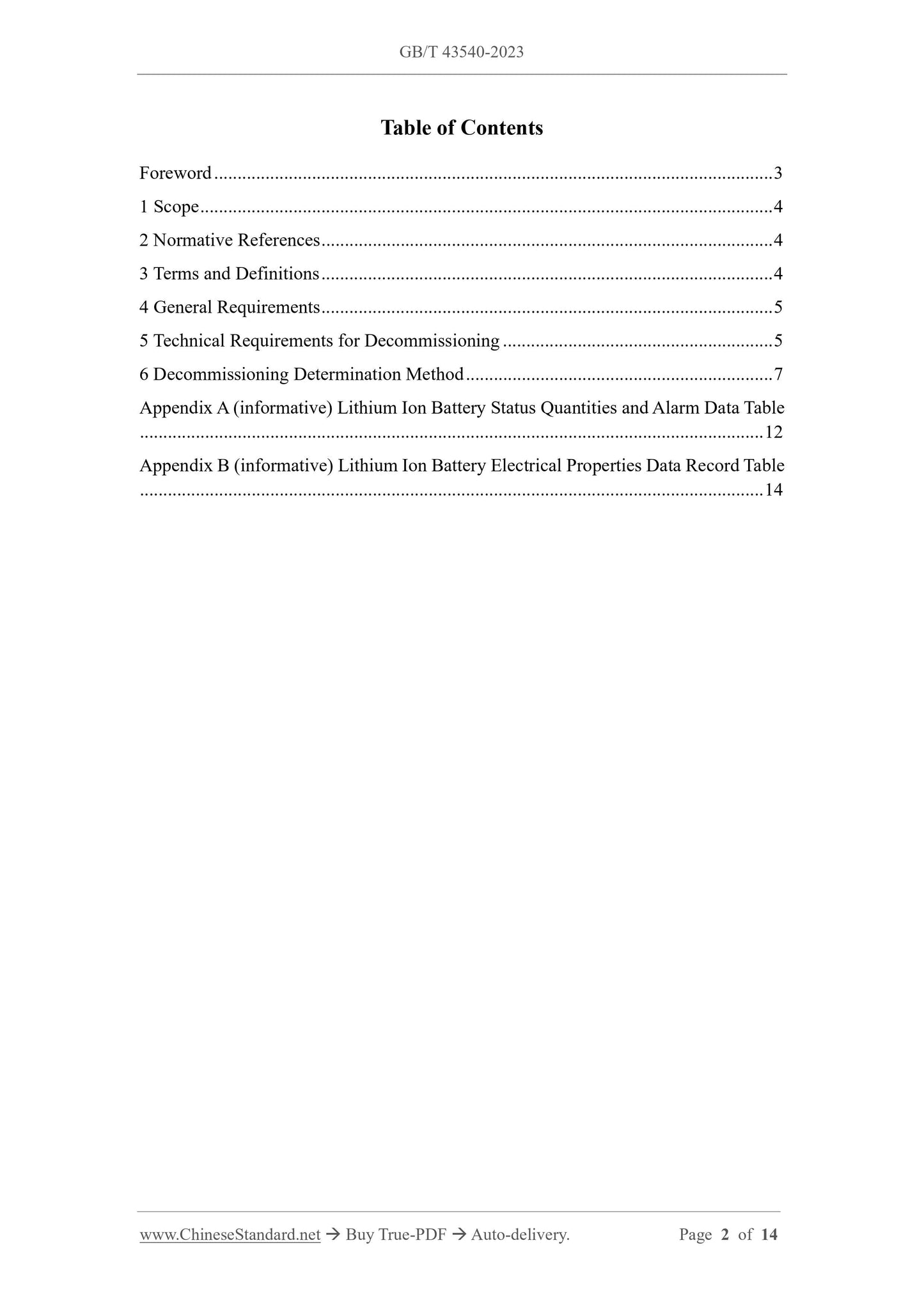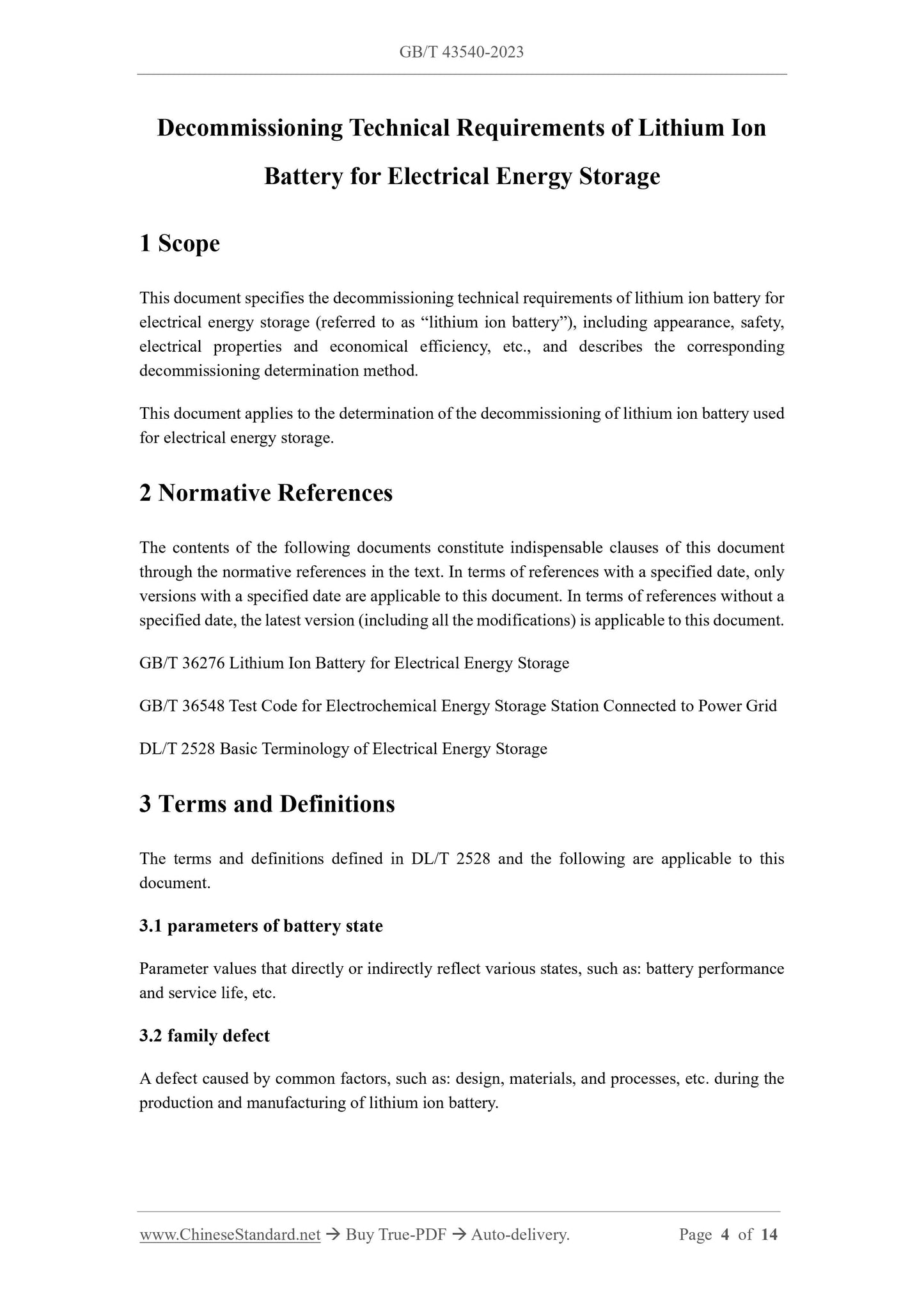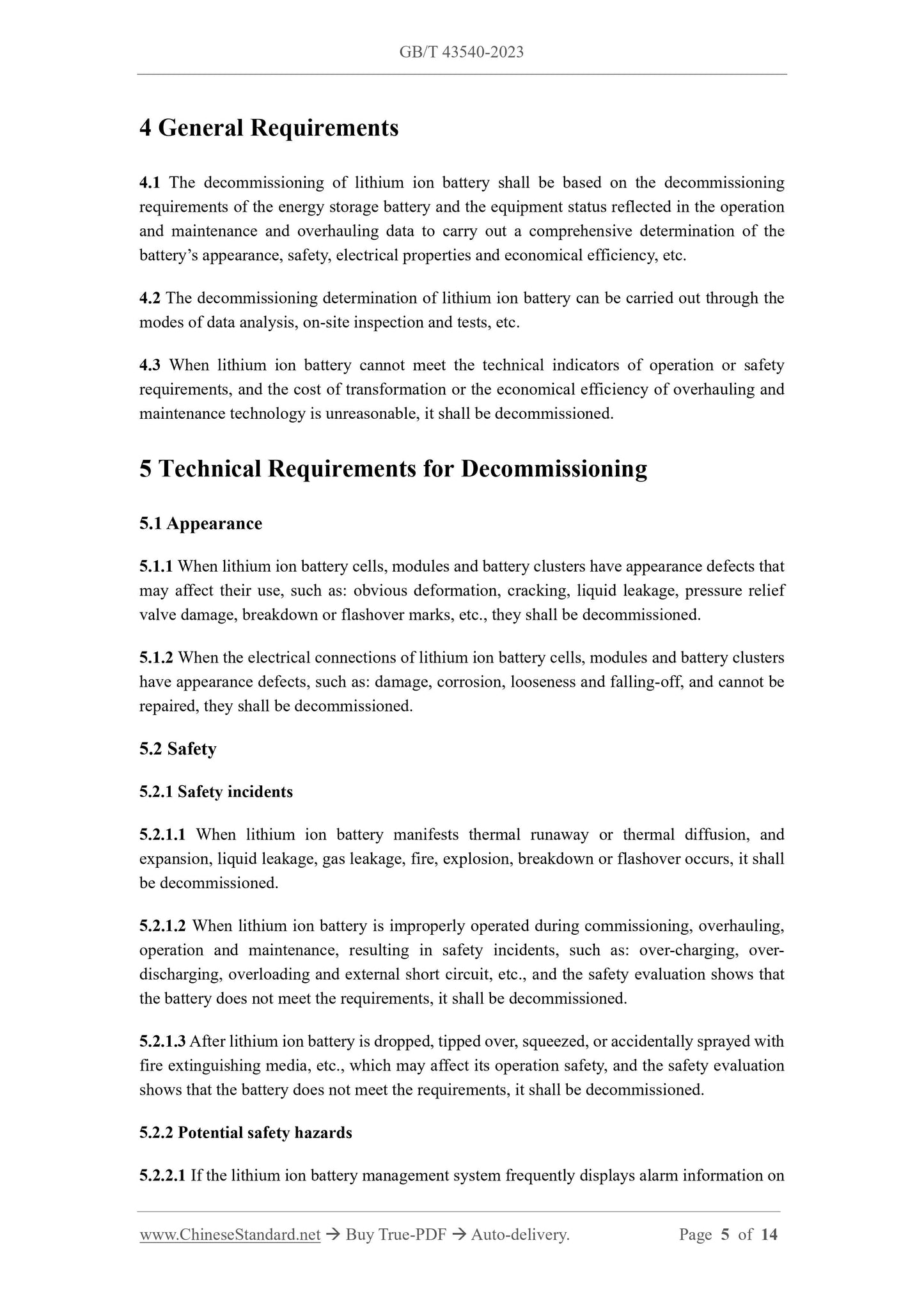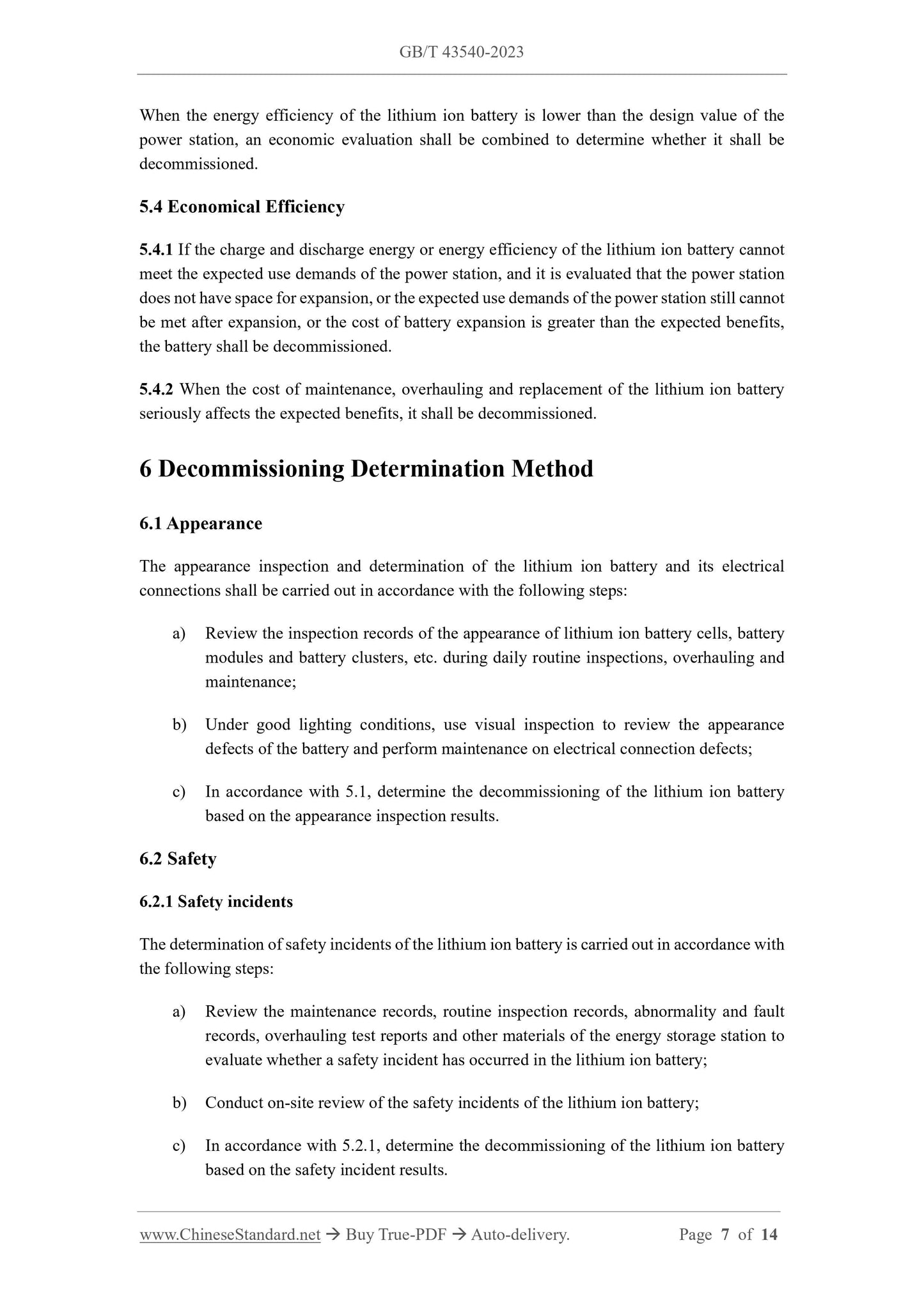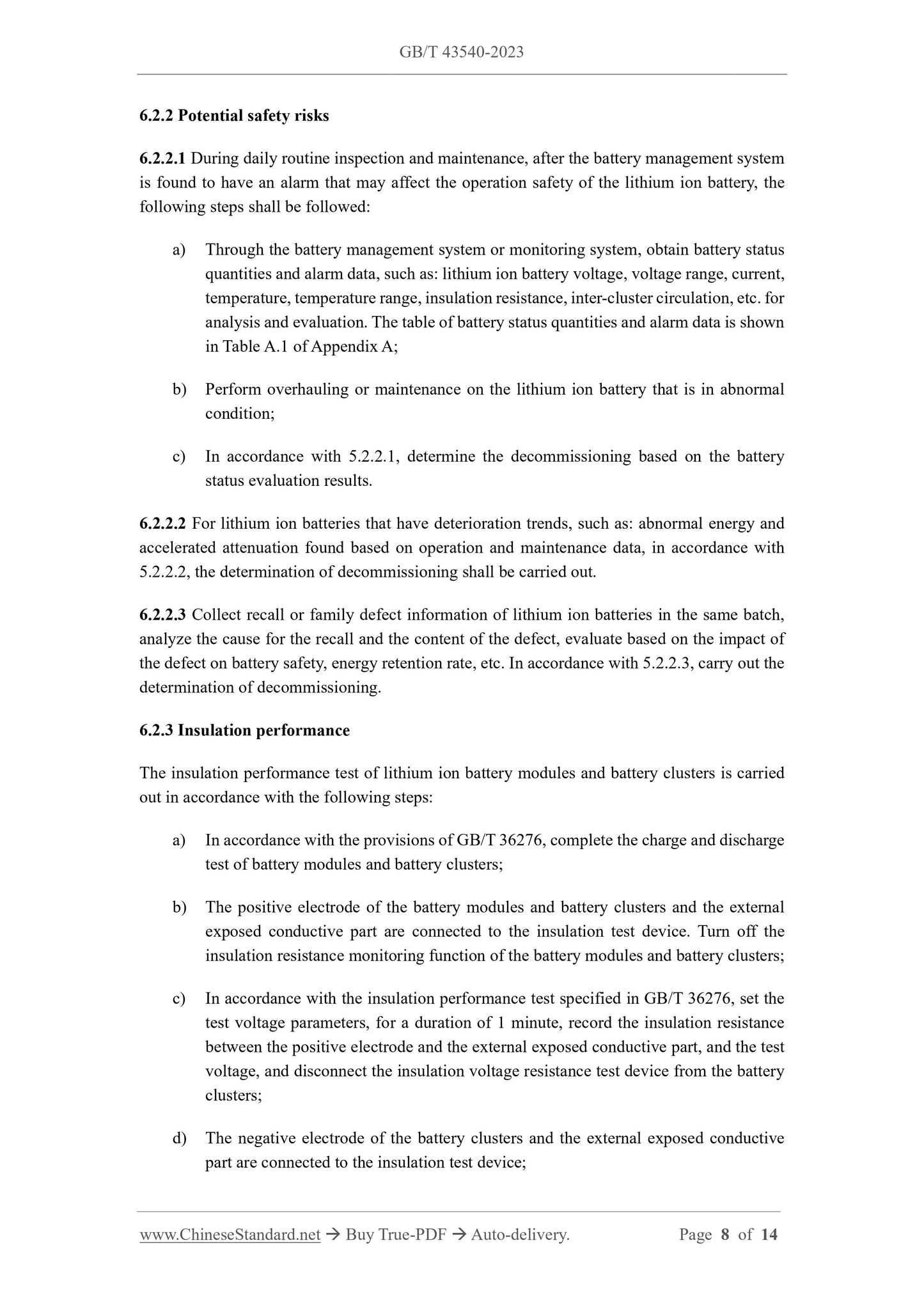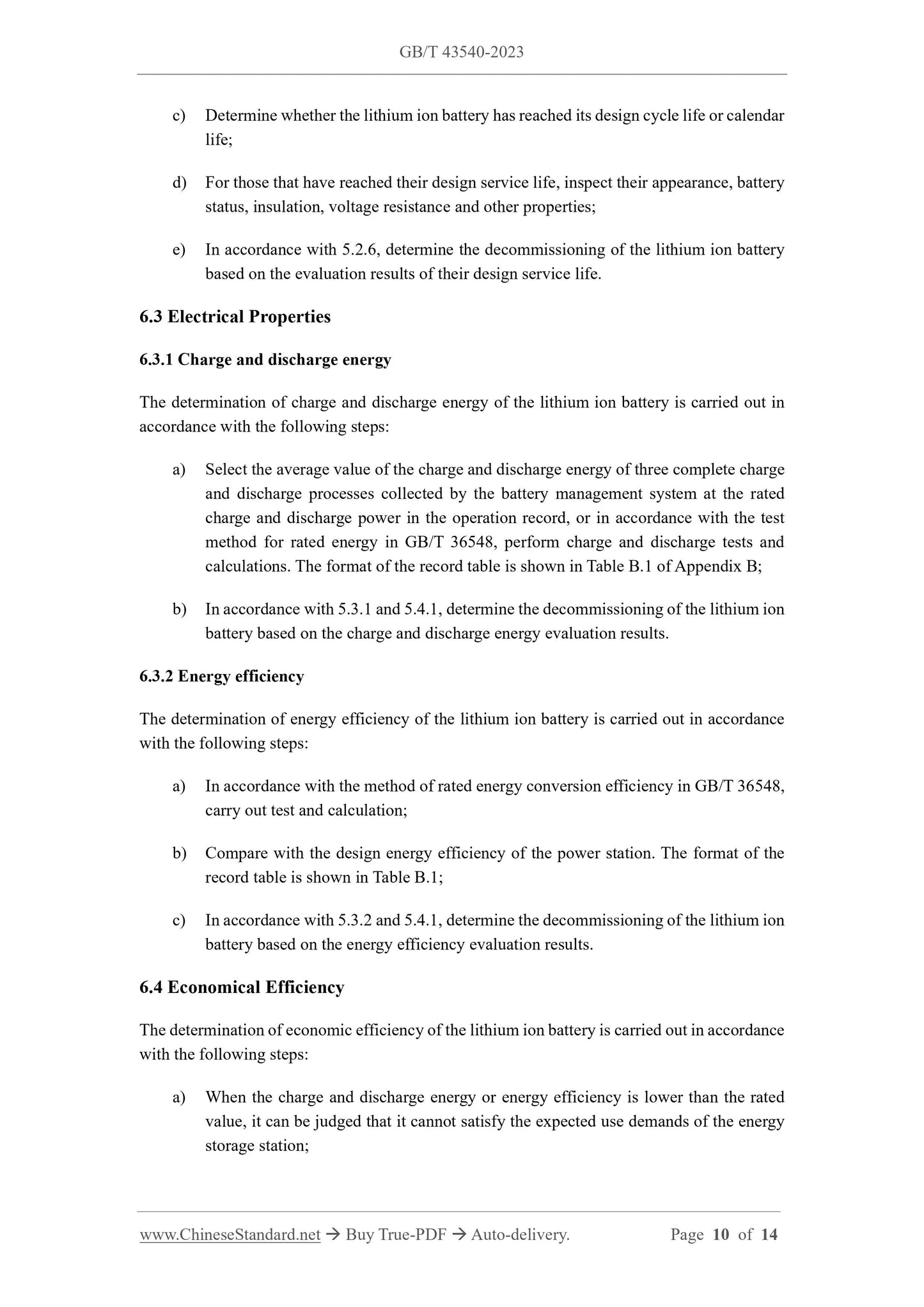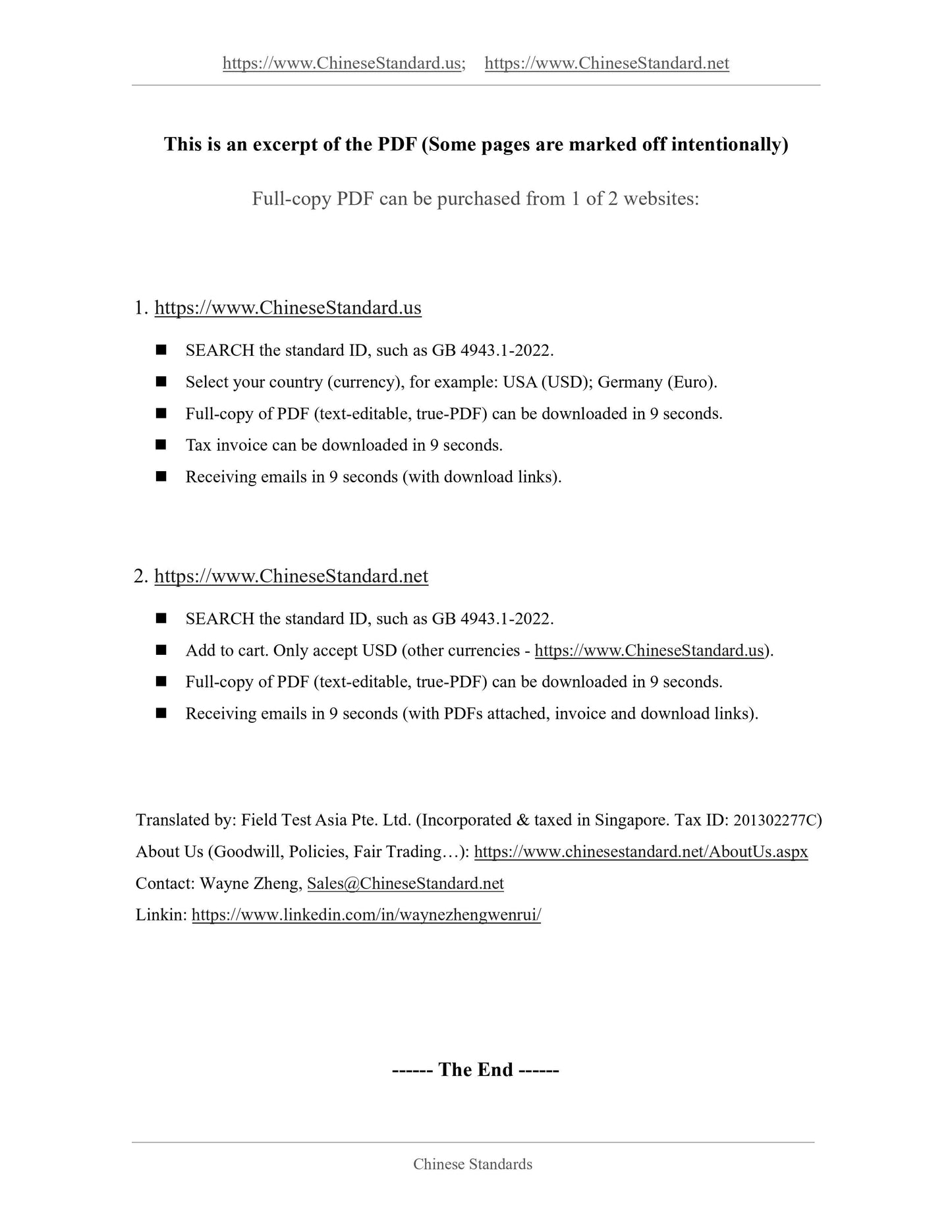1
/
of
8
www.ChineseStandard.us -- Field Test Asia Pte. Ltd.
GB/T 43540-2023 English PDF (GB/T43540-2023)
GB/T 43540-2023 English PDF (GB/T43540-2023)
Regular price
$275.00
Regular price
Sale price
$275.00
Unit price
/
per
Shipping calculated at checkout.
Couldn't load pickup availability
GB/T 43540-2023: Decommissioning technical requirements of lithium ion battery for electrical energy storage
Delivery: 9 seconds. Download (and Email) true-PDF + Invoice.Get Quotation: Click GB/T 43540-2023 (Self-service in 1-minute)
Newer / historical versions: GB/T 43540-2023
Preview True-PDF
Scope
This document specifies the decommissioning technical requirements of lithium ion battery forelectrical energy storage (referred to as “lithium ion battery”), including appearance, safety,
electrical properties and economical efficiency, etc., and describes the corresponding
decommissioning determination method.
This document applies to the determination of the decommissioning of lithium ion battery used
for electrical energy storage.
Basic Data
| Standard ID | GB/T 43540-2023 (GB/T43540-2023) |
| Description (Translated English) | Decommissioning technical requirements of lithium ion battery for electrical energy storage |
| Sector / Industry | National Standard (Recommended) |
| Classification of Chinese Standard | F19 |
| Classification of International Standard | 27.180 |
| Word Count Estimation | 14,169 |
| Date of Issue | 2023-12-28 |
| Date of Implementation | 2024-07-01 |
| Issuing agency(ies) | State Administration for Market Regulation, China National Standardization Administration |
Share
